- Finance
-
Equipment
- Beverage
- Coffee
-
Cooking
- Shop all cooking
- Bratt pans
- Char grills
- Chicken rotisseries
- Combi ovens
- Contact grills
- Convection ovens
- Conveyor toasters
- Cooktops
- Cooktop oven combos
- Crepe and pancake makers
- Deck ovens
- Fryers and oil filters
- Griddles
- Kebab machines
- Microwaves
- Pasta cookers
- Pizza ovens
- Range ovens
- Rice cookers
- Salamander grills
- Sous vide
- Speed ovens
- Steamers
- Tandoor ovens
- Toaster grills
- Waffle makers
- Wok burners
- Other
- Dishwashers
- Food display
- Food preparation
- Stainless steel
- Laundry
- Point of sale
-
Refrigeration
- Shop all refrigeration
- Blast chillers
- Chest freezers
- Countertop fridges
- Display freezers
- Display fridges
- Gelato freezers
- Ice-cream machines
- Ice machines
- Pizza prep fridges
- Refrigerated drawers
- Sandwich prep fridges
- Slushie machines
- Under counter freezers
- Under counter fridges
- Upright freezers
- Upright fridges
- Other
- Restaurant furniture
- Shop all equipment
- Customers
- FAQs
- Resources
- About Us
Share
Best commercial juicer: Buyer’s Guide
article
This commercial juicer buying guide covers
- Introduction
- Key questions to ask yourself
- Types of commercial juicers
- Main things to consider when ordering a commercial juicer
- Best commercial juicer brands
- Used commercial juicers - a worthwhile option?
- How to maintain your commercial juicer
- How often should a commercial juicer be serviced?
- Top questions to ask before you order a commercial juicer
- Commercial juicers FAQs
- Commercial juicer terminology
- Types of juices
- Save your cash, use ours!
Juicing is the trendiest way to squeeze the day! According to an IBISWorld Industry Research Report, the Australian juice market is worth $461m and demand is on the rise.
Whether you're looking to start a juice bar or add freshly squeezed juices to your restaurant menu, you'll need a commercial-grade juicer.
But why not just use a blender, you may ask? Unlike blenders, juicers separate the juice from the pulp, giving you pure juice without any chunks or bits.
They also keep its nutrients intact.
Choosing the right juicer can be tricky, but with the aid of this buyer’s guide, you'll be juicing like a pro in no time!
Key questions to ask yourself
When choosing a juicer, ask yourself two key questions to make sure you get the right juicer for your needs:
What types of fruits and vegetables will I be juicing?
Different types of juicers are designed to handle different types of produce.
A citrus juicer is best for juicing oranges, limes and grapefruit, while a wheatgrass juicer is better suited for juicing herbs and wheatgrass.
It's important to choose the right type of juicer for the fruits and vegetables you plan to juice in order to get the most efficient and effective results.
How much juice do you need to produce?
The amount of juice you need is a crucial factor in selecting a juicer.
If you're only making small amounts e.g. for customers at a spa, a personal juicer is sufficient.
However, if you need to make large quantities, you’ll need to get a commercial-grade juicer.
Types of commercial juicers
Centrifugal juicer (Fast juicer)
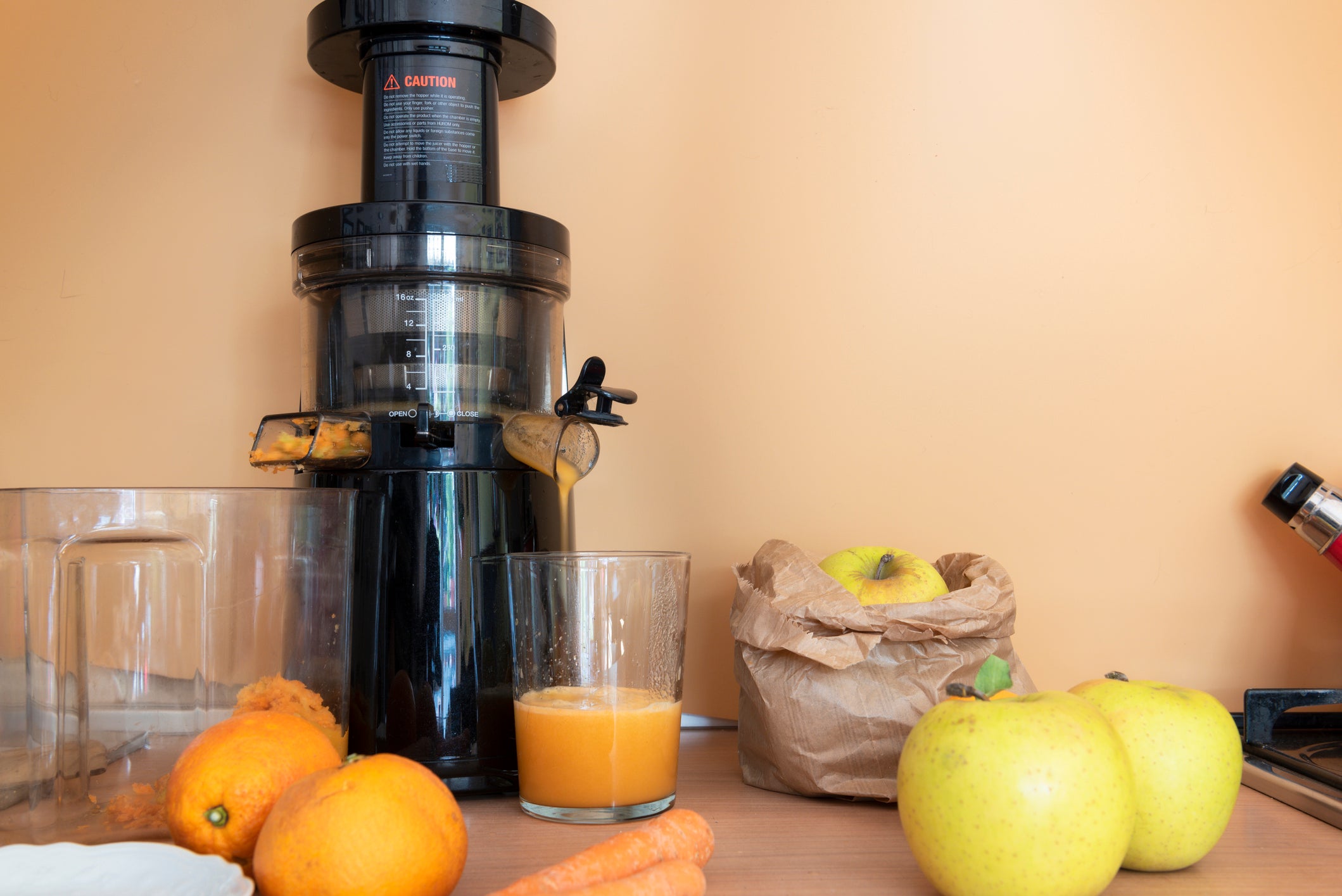
These juicers use a rapidly spinning basket to separate the juice from the pulp. They are fast and efficient, but they can be noisy and may not extract as much juice as other types of juicers.
Application
Used in high-volume establishments such as juice bars, cafes, and restaurants.
Used to make
Juices from fruits and vegetables, including carrots, apples, oranges, and celery.
Best for
Juicing quickly and efficiently, but not for leafy greens or wheatgrass.
Masticating juicer (Cold pressed/slow juicer)

These juicers use a slow-moving auger to crush and press fruits and vegetables to extract the juice.
They are quieter and more efficient than centrifugal juicers, but they can be slower and more expensive.
Application
Used in high- and low-volume establishments that focus on healthier, high-quality juices, including health food stores, spas and smoothie bars.
Used to make
Juice from fruits, vegetables, leafy greens, and wheatgrass. They’re also suitable for making nut butter and grinding coffee (with the aid of attachments).
Best for
Preserving the nutrients and enzymes in the juice (in contrast to centrifugal juicers).
Triturating juicers
Triturating juicers, also known as twin-gear juicers, use a combination of a slow-spinning auger and a pressing mechanism to extract the juice.
This enables them to break down the cell walls of produce and release more of its nutrients.
Also, the low-speed and high pressure used during the juicing process causes less oxidation and froth.
This produces juice with a longer shelf life compared to other types of juicers.
Application
Used in high-volume juice bars, cafes, and health food stores, where customers are looking for high-quality, nutrient-dense juices. They may also be used in juice trucks that prepare the juice in advance and store it for later consumption.
Used to make
High-quality juice from fruits and vegetables as well as nut milk, baby food, and frozen fruit sorbets.
Best for
Extracting nutrients from produce more efficiently for a more potent juice.
Citrus juicer
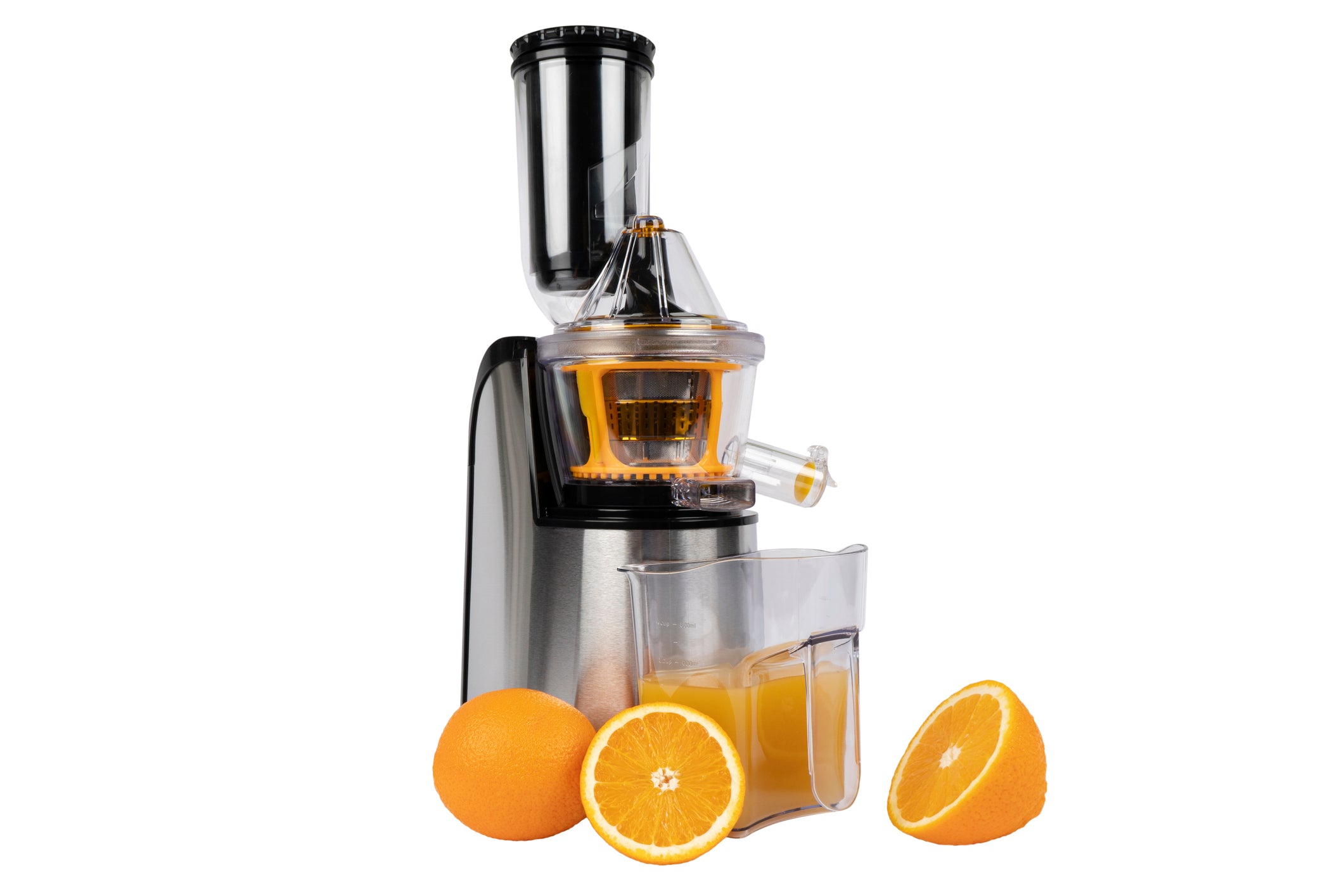
These juicers are specifically designed for juicing citrus fruits like oranges, lemons and limes.
A commercial orange juicer is typically powered by an electric motor. It has a cone-shaped reamer that extracts the juice and a strainer that separates the pulp from the juice.
While simple and easy to use, it’s not suitable for juicing other types of fruits and vegetables.
Application
Used in high- and low-volume establishments such as juice bars, cafes, restaurants, and spas that serve citrus juices.
Used to make
Juices from citrus fruits like oranges, lemons, limes, and grapefruits.
Best for
Juicing citrus fruits only.
Wheatgrass juicer

These juicers are designed specifically for juicing wheatgrass and other herbs.
They use a slow-moving auger to extract the juice, which helps to preserve its nutrients and enzymes.
Application
Used in juice bars and health food stores.
Used to make
Juice from wheatgrass, herbs and leafy greens such as kale, spinach, bok choy, cilantro, rosemary, and sage.
Best for
Extracting juice from wheatgrass, herbs and other leafy greens efficiently.
Click here to browse the wide range of juicers available from SilverChef.
Main things to consider when ordering a commercial juicer
Take a look at the factors to consider when ordering the best professional juicers for your establishment.
Type of commercial juicer
|
Juicer Type |
Pros |
Cons |
|
Centrifugal juicer (Fast juicer) |
Ø Fast and efficient juicing for firm fruits and vegetables Ø Less expensive than other types of juicers Ø Easy to clean and maintain |
Ø Less efficient at juicing leafy greens and wheatgrass Ø Noisier Ø Heat build-up during juicing can degrade the nutrient quality |
|
Masticating juicer (Cold-press juicer/Slow juicer) |
Ø More efficient at juicing leafy greens, wheatgrass, and other delicate produce Ø Less noisy Ø Lower heat build-up, thus preserving more nutrients |
Ø Slower juicing process compared to centrifugal juicers Ø Typically more expensive than centrifugal juicers Ø Can be more difficult to clean and maintain |
|
Triturating juicer (Twin-gear juicer) |
Ø Most efficient at juicing leafy greens, wheatgrass, and other delicate produce Ø Retains more nutrients and produces juice with a longer shelf life Ø Gives the highest yield compared to other juicers
|
Ø Most expensive type of juicer Ø Slowest juicing process compared to other types Ø Can be difficult to clean and maintain |
|
Wheatgrass juicer |
Ø Specifically designed for juicing wheatgrass and other leafy greens
Ø Preserves maximum nutrients and enzymes Ø Generates less pulp and waste than other types of juicers |
Ø Less efficient at juicing other fruits and vegetables Ø Expensive and less widely available Ø Can be difficult to clean |
|
Citrus juicer |
Ø Most efficient at juicing citrus fruits such as oranges, lemons, and limes Ø Easy to clean and maintain Ø Less expensive compared to other juicers |
Ø Limited use — cannot juice other fruits and vegetables Ø May not be as durable as other types of juicers Ø Juice oxidizes quickly, so must be consumed immediately |
Size of the feeder tube
The size of your juicer's feeder tube will have a big impact on your juicing experience, especially if you plan on juicing leafy greens, fruits, and veggies.
Make sure to buy a wide feeder tube that can accommodate whole fruits or large chunks of greens.
A smaller feeding tube will require you to cut the fruits or veggies into smaller pieces before juicing them, which will take more time.
Budget
The price of a commercial juicer in Australia ranges from about $2,000 to $10,000.
When budgeting, don’t forget to factor in the incidental costs, such as professional installation (if necessary) and regular maintenance and servicing.
This method produces high-quality juice with more nutrients, perfect for the juice connoisseur.
Processing speed
A juicer that can extract juice quickly and efficiently can make all the difference in keeping customers happy and coming back for more.
Two types of juicers currently dominate the commercial market: centrifugal and masticating juicers.
Centrifugal juicers are like a race car on the juicing track, with high-speed processing of 1000–3000 RPM (rotations per minute).
They are perfect for businesses that need to produce large quantities of juice in a jiffy.
Masticating juicers, on the other hand, are like a fine wine, taking their time to extract every drop of juice at a slower speed of 80–200 RPM.
This method produces high-quality juice with more nutrients, perfect for the juice connoisseur.
In summary, consider the volume of juice you need and thus how quickly you need to produce it.
Noise
Another, often overlooked, factor to consider when choosing a juicer is noise levels.
A noisy juicer might turn off your customers and make working conditions miserable for your employees.
Look for a juicer with a decibel (dB) level less than 60 dB, which is equivalent to the mild hum of a regular conversation.
With the advancement of technology, many commercial juicers now include quieter motors and sound-dampening materials.
Accessories
There are several useful accessories you can order to make the most of your juicer. Here are a few to consider:
Cleaning brush: These brushes make it easier to remove any pulp or residue from the inside of the juicer.
Juice container: A container that’s placed under the juicer to collect the expelled juice, for easy storage.
Juicing screen: A screen that strains the juice, separating the pulp from the juice and making the latter smoother and clearer.
Pulp container: A container that can be attached to the juicer to collect the expelled pulp, thereby reducing the amount of cleaning required afterwards.
Tamper: A tamper (or pusher) is used to push fruits and vegetables down the feeder tube, ensuring proper juicing and increasing the juicer’s efficiency and yield.
Energy and water efficiency
Energy and water efficiency are crucial factors to consider, not only in terms of cost savings but also the environment.
Opt for juicers with an Energy Star rating, which means that it meets the energy efficiency guidelines set by the government.
Similarly, look for juicers that have a water efficiency labelling and certification such as WELS (Water Efficiency Labelling and Standards) rating, which is a water efficiency labelling scheme in Australia.
Additionally, some commercial juicers come with an automatic shut-off feature, which can also help to save energy and water when the machine is not in use.
Safety Features
The right safety features can mean the difference between a smooth sailing and a recipe for disaster. Here are some to look out for:
Auto shut-off
This feature automatically turns off the motor when the juicer becomes overloaded or jammed.
Materials
The juicer should be made of high-quality materials that are easy to clean and sanitize, to prevent food contamination.
Non-slip feet
These prevent the juicer from moving or sliding during operation.
Overheat protection
This feature automatically turns off the juicer when it becomes too hot.
Safety locking arm
A component that prevents the juicer from operating if the lid is not securely in place.
Safety switch
A feature that automatically turns off the juicer when the lid is open or removed.
Ease of use
When evaluating the ease of use of a commercial juicer, it's important to consider:
Large feeding chute
Allows you to insert whole fruits and vegetables into the mixer without having to chop or cut them into smaller pieces first, saving you time and effort.
Intuitive controls
Simple and easy-to-use controls such as push-button operation or a touchscreen display can minimize errors and maximize efficiency.
Variable speed settings
The ability to adjust the speed of the juicer according to the type of fruit or vegetable being juiced makes the juicer more versatile and easier to use.
Pulp ejection system
A juicer with this system automatically separates the pulp from the juice, reducing the need for manual straining and making the process faster and less messy.
Ease of cleaning
When assessing how easy it would be to clean a juicer, it’s important to consider:
Dishwasher-safe parts
Juicers with parts that are safe to clean in a dishwasher can save time and effort.
Removable components
A juicer that can be easily disassembled for cleaning, with removable parts that can be washed separately, can make cleaning easier.
Anti-drop spout
These spouts minimise mess during use and reduce the need for cleaning.
Smooth and rounded design
A juicer with no corners and crevices is easier to clean, since there are no places where pulp or juice can accumulate.
Carefully study the warranty to understand exactly what is and isn't covered.
Warranty and insurance
Most commercial juicer manufacturers provide warranties ranging from one to five years, depending on the type of juicer.
If the equipment develops a covered fault within that time, the manufacturer is obliged to repair or replace the equipment or give you a full refund.
Carefully study the warranty to understand exactly what is and isn't covered.
SilverChef offers a three-month parts-and-labour warranty on all our ‘Certified Used’ and clearance equipment.
Business insurance covers loss or damage to your commercial kitchen equipment and other property.
This coverage typically includes fire, accident, and theft.
Some insurers also offer equipment-breakdown cover.
Contact your insurer to confirm whether the equipment you’re getting is automatically covered by your policy or will need to be added to it.
If your insurer doesn’t provide flood cover as standard, you may wish to consider requesting it.
Best commercial juicer brands
We’ve compiled a list of the best makes and models of commercial juicers. It's important to note that this list is not definitive and there are other high-quality juicers available. The final choice will depend on your specific needs and budget:
Robot Coupe
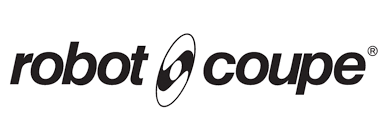
Robot Coupe is a French brand that was established in 1961.
The company specialises in commercial kitchen equipment such as food processors, mixers, and blenders.
Their equipment is known for its high quality and durability.
Robot Coupe J80ULTRA Juicer
The Robot Coupe J80 is a top-of-the-line commercial juicer that can handle a wide range of fruits and vegetables such as apples, oranges, lemons, limes, tomatoes and celery with ease.
Its inclined base and no-splash spouts make for an efficient and clean juice flow, making it perfect for juice bars and restaurants.
With a capacity of 120 litres per hour, this stainless-steel juicer is built to last.
One of the key features of this juicer is its automatic feeder tube, which removes the need for a pusher, saving time and effort.
Additionally, the juicer does not generate heat, preserving the nutritional value of your fruits and vegetables.
The large capacity drip tray keeps the serving area clean and the 700W motor is powerful and silent, allowing you to operate it in front of customers.
The motor base is designed for optimal juice extraction.
Robot Coupe Centrifugal Juicer J-100
The Robot Coupe J100 Juicer is a commercial-grade appliance designed for prolonged use in juice and smoothie bars, restaurants, and other food service establishments.
With a speed of 3000 RPM, it extracts juice quickly without compromising on flavour.
The machine is made with durable stainless steel and plastic.
The motor is powerful yet silent thanks to its built-in ventilation system.
The juicer is equipped with a large ejection chute and a 7.2-litre translucent pulp container for easy cleaning.
The basket is removable, and the feeder is automatic.
It can handle a wide range of fruits and vegetables, including apples, oranges, celery, limes, lemons, tomatoes, and other hard or firm fruits and vegetables with thick peels, large seeds, and stems removed.
With an output of 160 litres per hour, it can keep up with high demand.
Hamilton Beach
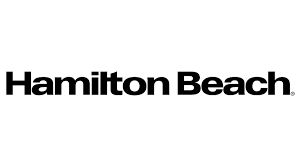
Hamilton Beach was founded in 1910 by L.H. Hamilton. The brand is known for its high-quality, affordable commercial kitchen appliances, including juicers, blenders, slow cookers, toasters, and coffee makers.
Otto™ the Juice Extractor HJE960 Series
Designed to extract maximum juice from fruits and vegetables, this juicer has an ergonomic design and durable materials, making it ideal for busy juice shops.
It features a large feed chute, easy-to-clean parts, and a safety interlock that turns off the motor and stops the blade before the lid can be opened.
With a quiet, brushless induction motor optimized for continuous use, the Otto™ HJE960 delivers delicious, fresh juice every time.
It’s available in both 120V and 230V models.
FreshMark™ Wheatgrass Juicer Model HWG800
This powerful and durable commercial juicer is designed for maximum juice yield.
Boasting a high-torque motor, it’s optimised for extracting the most juice from wheatgrass.
The juicer comes with a custom wrench, stomper, and maintenance kit, and its food-zone parts are easily removable for quick cleaning.
The toggle switch makes it easy to operate, and it even has a reverse option to change the motor direction for cleaning after juicing dry herbs or sprouts.
Hurom

Founded in 1974, Hurom revolutionized the juicing industry with its introduction of the first slow-juicer prototype.
Through years of research and development, the brand has established itself as a leading manufacturer of high-performance, premium-quality juicers.
Hurom's patented technology, versatile functionality, and sleek design provide consumers with an unparalleled juicing experience, enabling them to create a variety of nutritious and delicious juice, smoothies, nut milk, sorbets, and ice cream with ease.
Hurom H22 MK2 Commercial Cold Press Juicer
This cold-press juicer is a game-changer for commercial kitchens, offering heavy-duty design, high-volume juicing and efficient operation.
With a large hopper, quiet performance and eight-hour run time, it's perfect for any customer-facing setting.
Plus, the H22 produces the highest yield of any slow-press juicer and can juice a wide range of produce, from carrots to kale and beyond.
And with the included coarse strainer, you can also make nut milk and smoothies!
Hurom HW-SBI18 – Juicer
This commercial-grade masticating juicer can handle big batches of fruits and veggies with ease, thanks to its heavy-duty design and large juicing chamber.
The included plunger ensures maximum extraction and the waste chute makes clean-up a breeze.
Serve your customers quickly with the juice spout and enjoy peace of mind with the juicer's stable, slip-resistant rubber feet.
Ruby

Ruby Kitchen Equipment was established in 1949 by John Ruby. The brand is renowned for its high-quality, durable, and affordable commercial kitchen equipment. Ruby offers a wide range of equipment including juicers, blenders, mixers, and food processors.
RUBY 2000 Commercial Juice Extractor
This reliable and efficient juicer can produce a continuous supply of fresh, rich juice from a variety of fruits and vegetables, including apples, celery, carrots, and citrus fruits.
It features an automatic pulp ejection and a waterproof touch-button switch, and can produce up to 1.5 litres of juice in 30 seconds.
The juicer has eight different spout positions, is easy to clean, and comes with NSF approval (all parts that come into contact with juice are made of stainless steel).
It’s suitable for any location and requires minimal bench space.
Kuvings

Founded in 1978 in South Korea by J.H. Lee, Kuvings is a well-respected brand in the commercial kitchen equipment industry.
The brand is known for producing high-quality and innovative juicers, including masticating and centrifugal models.
Kuvings prides itself on using only the finest materials and the latest technology to produce durable, efficient, and easy-to-use juicers that meet the needs of commercial users.
Kuvings NS-1226 CBC2 slow juicer
This top-performing slow juicer combines convenience and quality.
Its masticating technology crushes and squeezes ingredients to extract every drop of juice, preserving the flavours and nutrients.
The large feeding chute and easy-to-clean design make it effortless to juice your favourite fruits, veggies, and greens.
Plus, the included recipe book and cleaning brush make it easy to explore new flavours and keep your juicer in tip-top shape.
Kuvings C8000 Cold Press Juicer with Bonus Sorbet Strainer
With its sleek and compact design, this juicer is easy to use and clean.
Plus, the wide feeding chute lets you juice whole fruits and veggies without having to chop them up first.
The fine strainer is perfect for making juices, nut milk, and more.
And it's quiet, so you can juice at any time without disturbing your customers.
The included accessories and cleaning tools make it easy to keep the C8000 in top condition.
Used commercial juicer — a worthwhile option?
Spending thousands of dollars on a new commercial juicer can put a strain on your budget and cash flow.
If you’d prefer not to invest a lot of money in a commercial juicer, a cheaper, pre-owned appliance might be the solution you’re looking for.
SilverChef’s range of ‘Certified Used’ commercial equipment is mostly ex-rental equipment sourced from businesses we know and trust.
The equipment is typically less than two-and-a-half years old, has been fully refurbished by us, and is backed by a three-month parts-and-labour warranty.
You can either buy or finance the ‘Certified Used’ (and clearance) equipment on our website.
We’re one of the few financiers, if not the only one, in Australia that funds second-hand commercial kitchen equipment.
How to maintain your commercial juicer
Maintaining your commercial juicer will ensure it performs efficiently and extend its life. Here are some tips for keeping your juicer in top shape:
Daily cleaning
Clean the juicer thoroughly after each use to prevent the build-up of pulp and other food debris. Disassemble and clean the juicer’s components, including the blade, chute and collection bin.
Weekly cleaning
Once a week soak the removable parts of the juicer in warm, soapy water to remove any accumulated build-up.
Filters
Regularly cleaning or replacing the filters will ensure your runs efficiently and produces high-quality juice.
Keep the juicer dry
This will prevent rust and other forms of corrosion, which can damage the juicer over time.
Lubrication
Use a food-grade lubricant to keep the moving parts of your juicer well-oiled, which will reduce friction, wear and tear.
Blade sharpening
The juicer blade can become dull over time; regularly check it and, if necessary, sharpen it to ensure it works at its best.
Follow manufacturer's instructions
Always read the manufacturer's manual and follow the instructions to ensure your juicer is being used and maintained correctly.
How often should the commercial juicer be serviced?
The specific servicing needs of a commercial juicer will depend on the make and model and how frequently it’s used.
You should follow the manufacturer’s recommendations for maintenance and servicing.
This may include regular inspections, replacement of worn-out parts, and any necessary repairs.
Top questions to ask before you order a commercial juicer
Questions to ask your equipment dealer
- What does the warranty cover?
- What is the expected lifespan of the juicer?
- How often does the juicer need to be serviced and how much does it cost?
- How easy is it to clean and maintain?
- What types of fruits and vegetables can the juicer handle?
- How much juice can it extract from a given amount of produce?
- Can the juicer handle large quantities of produce or is it better suited for small batches?
- Does the juicer come with any additional attachments or accessories?
- How energy-efficient is the juicer?
Questions to ask your industry peers
- What type of juicer do you use in your business and how does it perform?
- Have you had any issues with the juicer breaking down?
- How does the juice quality compare to other juicers you’ve used?
- How does the juicer handle high-volume production and can it keep up with demand?
- How easy is it to clean and maintain the juicer?
- Have you found the customer service and support from the manufacturer to be satisfactory?
- Have you had any problems with the juicer clogging or jamming?
- How does the juicer compare in terms of juice yield and extraction?
Commercial juicers FAQs
How much does a commercial juicer cost?
The cost of a commercial juicer in Australia varies widely between makes and models.
A basic commercial juicer starts at around $2,000, while high-end models can cost upwards of $10,000.
How do you clean a commercial juicer?
Below are some steps to follow when cleaning a commercial juicer:
- Unplug the machine and remove all detachable parts, such as the juicing basket, pulp container, and feed chute.
- Rinse all parts with warm water.
- Use a brush or sponge to scrub all parts to remove any remaining pulp or debris.
- Use a food-safe sanitiser or vinegar solution to sanitize the parts. Rinse all parts with water after sanitizing.
- Use a clean cloth or air dry all parts before reassembling the machine.
- Wipe down the exterior of the machine with a damp cloth.
- Plug the machine back in and run it for a few minutes to ensure that all parts are working properly and the machine is ready for use.
What’s the difference between a juicer and a blender?
A juicer extracts the juice from fruits and vegetables by crushing, grinding, or squeezing the liquid out, leaving just the thin juice and none of the fibre behind.
Blenders do not separate the juice and fibre; rather, they blend them together for a thicker consistency.
This results in a smoother and more consistent juice.
What are the benefits of a cold-press juicer?
One of the main benefits of a cold-pressed juicer is its ability to extract a higher yield of juice from fruits and vegetables while preserving more of their nutrients, enzymes, and minerals in the juice.
The slower speed of the cold-pressed juicer causes less oxidation, heat production and foam.
This results in a smoother and more consistent juice.
Cold-pressed juicers are also versatile; as well fruits and vegetables, they can juice leafy greens; and create nut butter and nut milk.
What are the types of commercial juicers?
The most common types of commercial juicers are centrifugal, masticating, and twin-gear juicers.
Centrifugal juicers are fast and efficient, masticating juicers are slower but produce a higher yield, and twin-gear juicers are the most efficient and produce the highest yield of juice but are also the most expensive.
What wattage is best for a commercial juicer?
Most juicers range between 400 to 1,000 watts, but the sweet spot is 700W and above.
This enables you to juice fruits and vegetables whole. Note that gentler, cold-press juicers are generally around 200W.
Commercial juicer terminology
Auger
A coiled, spiral-shaped juicer part that crushes ingredients against an inner cone-shaped screen or filter to extract the juice.
Bioceramic magnetic gears
Found in twin-gear juicers, these gears improve the nutritional value of the juice by rearranging its molecular structure.
Magnets in the centre of the gears work to break down the nutrients in fruits and vegetables, making them easier for the body to absorb.
Blade
The cutting mechanism in a centrifugal juicer — typically a high-speed rotating disc with minute sharp teeth that shred the produce to release the juice.
Centrifugal juicer
A type of juicer that uses centrifugal force to extract juice from produce.
The produce is shredded by a high-speed spinning grater or blade and then flung against the walls of an attached filter basket.
Citrus press
A type of hand-operated juicer that uses a mechanical pressing action to extract juice from citrus fruits.
Cold press juicer
A juicer that uses a pressing action to extract juice without generating heat, resulting in juice with more nutrients.
The label can be applied to any low-speed, masticating juicer, as they all use pressure to extract the juice without heating it.
Control panel
The part of the juicer where the user can adjust settings, such as speed and power
Feed chute
The opening through which ingredients are inserted when juicing.
The feed chute is often situated at the juicer's highest point so that materials can either fall or be pushed into the machine.
Juice bowl/juice drum
The part of the juicer that collects juice and transfers it to the juice outlet.
The bowl usually has two outlets — one for the juice and one for the pulp.
Juicer pusher
Also known as a juicer tamper or plunger, this accessory is used to push ingredients into the juicer's feed chute or feed tube.
Juicing screen
Also known as the juicer filter, this is the part of the juicer that separates the juice from the pulp. It is usually made of a conical or cylindrical stainless-steel sheet with small perforations, or — in the case of some centrifugal juicers — a stainless steel mesh.
Masticating juicer
This juicer is designed to thoroughly chew and grind plant fibres to extract maximum flavour and nutrients from them. It’s more efficient than a centrifugal juicer, and it produces a more flavourful, nutritious juice.
Pulp bucket
The container that collects the discarded pulp after juicing.
Twin-gear juicer
In this type of juicer, two stainless-steel cylindrical gears mesh together and crush ingredients between the gears.
Types of juices
From refreshing citrus juices to nutrient-rich vegetable blends, the world of juice is a diverse and delicious one.
Some of the most common types of juices are:
Fruit juice

A delicious and nutritious blend of nature’s best fruits.
Be it a refreshing gulp of watermelon juice on a scorching summer day, a sip of crisp apple juice on an autumn morning, or a tangy cranberry juice to liven up your senses, fruit juice offers a symphony of flavours that tantalise the taste buds.
Vegetable juice

A nutritious powerhouse of vitamins and minerals that are essential for maintaining good health.
Whether you prefer a single vegetable or a blend, vegetable juice is a delicious way to get your daily dose of essential nutrients.
Examples include tomato juice, carrot juice, and beet juice.
Citrus juice
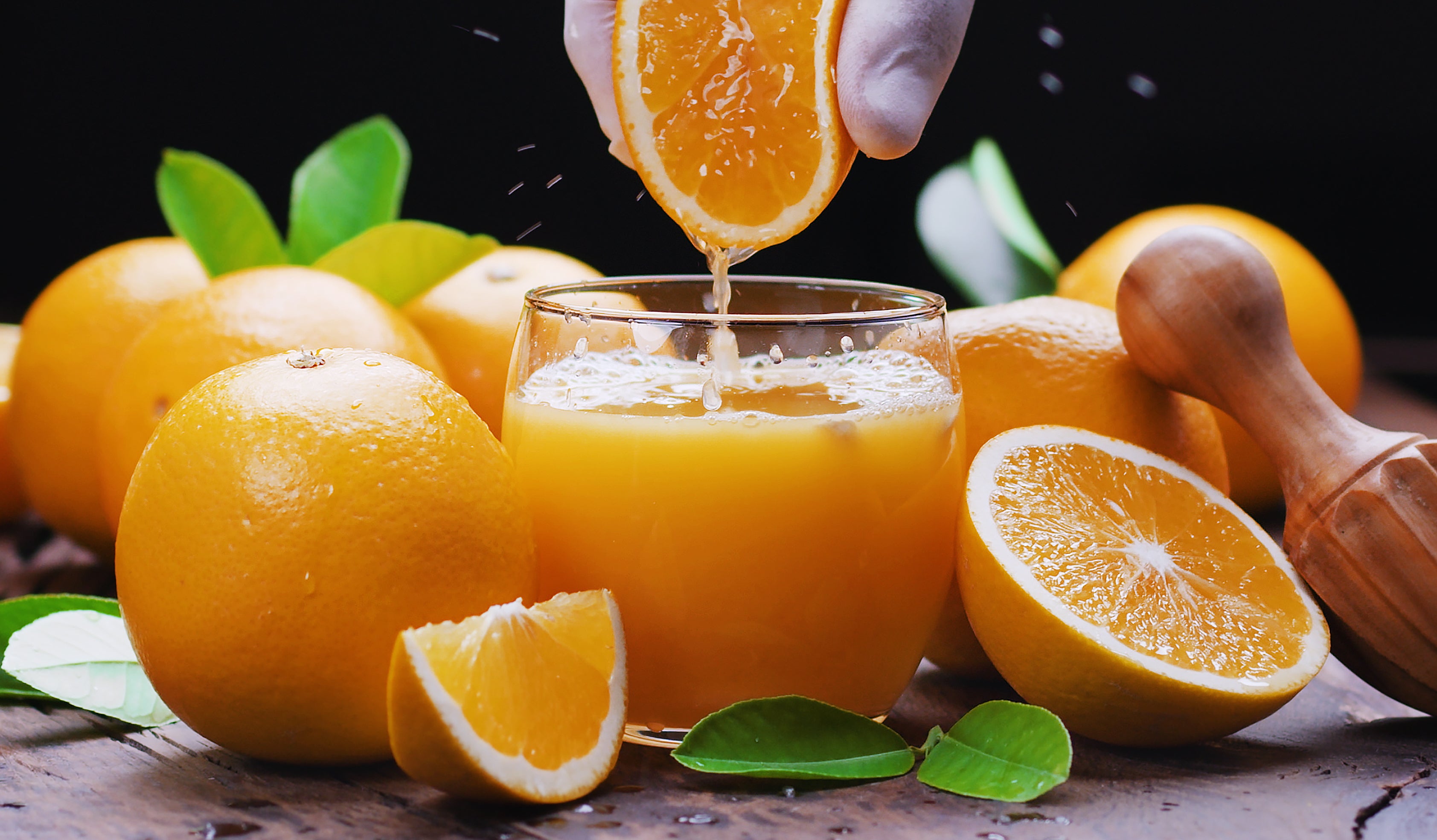
Gives you a burst of tangy flavour from oranges, lemons and limes.
Not only is it delicious, it’s also packed with vitamin C, antioxidants, anti-inflammatory compounds and flavonoids to boost immunity, detoxify the body and promote healthy skin.
Wheatgrass juice

A natural detoxifier, wheatgrass juice can increase energy levels, improve digestion, and strengthen immunity.
It's often consumed as a shot but can also be added to smoothies and other juice blends for an extra boost of nutrition.
Keep your cash, use ours!
Hospitality equipment can be expensive and paying for it outright can put pressure on your business’s cash flow.
Our finance solutions allow you to get the equipment you want now and to pay for it in small, regular amounts out of the revenue it helps generates.
Rent–Try–Buy® not only helps you maintain your cash flow, it also gives you unrivalled flexibility to adapt your equipment to the changing needs of your business.
You can upgrade or buy the equipment at any time or, after 12 months, return or continue renting it.
If you decide to buy the equipment, we’ll give you back 75% of the net rent you paid in the first year and 25% of any rental payments thereafter — to put toward the purchase price.
Read more about Rent–Try–Buy
